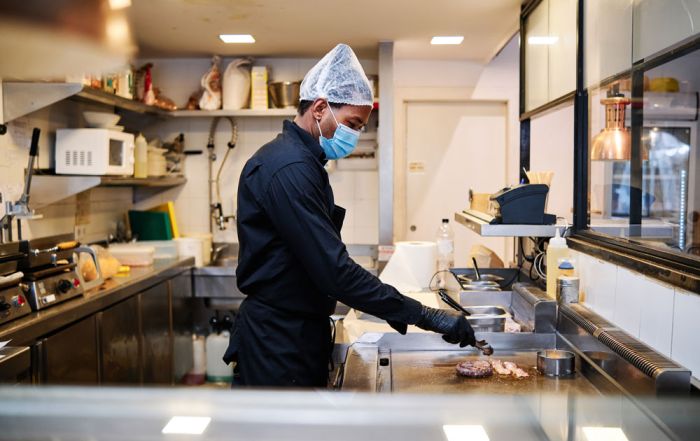Recipe for a Positive Food Safety Culture
For the past few years, we have referred to the importance of developing a positive food safety culture within foodservice operations. The workplace culture is basically a reflection of “this is what and how we do things here”. Manufacturing and construction companies often proudly post the number of days “accident free” as a reflection of their workplace safety culture. In foodservice though, everyday has to be foodborne illness free – otherwise the operation may not be in business for long!
So what are the elements of a positive food safety culture? In past work at Iowa State University, a doctoral student led focus groups within various types of foodservices to identify elements of a food safety culture in order to better define the pieces of the puzzle. This resulted in identifying nine themes and their descriptors (shown below). You can see familiar topics such as leadership, communication, and teamwork. It is probably no surprise that management style was also listed – and aligned with that is the responsibility the manager has for ensuring a good work environment with availability of adequate supplies.
But in reading through the themes, you will see it is not just the manager who influences the workplace culture. Employees themselves, through their own internal motivation, commitment to the job, and contributions to the team, are part of the recipe for creating a positive safe food culture. Managers need to hire the right person for the job. Doing so depends on defined knowledge, skills, and attitudes/attributes (KSAs) expected of the individual to perform the work successfully, and communicating expectations. In fact, a conclusion of the study was that soft skills ARE important! Next time we will delve into some of the other themes such as accountability, and how these all fit together. Everything is connected – and each piece of the puzzle contributes to the picture, or the food safety vision for the foodservice. A missing piece contributes to risk. Risk Nothing!
| Theme | Descriptors |
| Leadership | Role Model/Presence/Monitor/Consistent |
| Communication | Openness/Consistent/Constant/Frequently Remind/Bottom-up approach/Clarity |
| Commitment | Value/Priority/Internal motivation |
| Environment | Adequate supply/Quality supply/Easy access to resources |
| Teamwork | Teamwork within department/unit Teamwork between department/unit |
| Accountability | Reward/Punishment |
| Work pressure | Time restraint/Adequate staff/Adequate supply of resources/Work schedule/ Customer and client expectation or demand |
| Management style and system | Availability of operating procedures/Provide training |
| Risk perception |
Ungku Zainal Abidin, U.F., Arendt, S.W., & Strohbehn, C.H. (2014). Food Safety Culture in Onsite Foodservices: Development and Validation of a Measurement Scale. Journal of Foodservice Management and Education, 8 (1). https://www.fsmec.org/wp-content/uploads/2015/01/2014-Volume-8-Issue-1.pdf
Based on dissertation research of Fatimah Ungku-Zainal Abidin in 2013 titled Measuring Food Safety Culture: Insight from Onsite Foodservice Operations.
READ MORE POSTS
Hot off the Press: The 2022 Model Food Code has been Released! Part One.
It has finally arrived! Yes, the new year has arrived – but I was not referring to it. I was referring to the new 2022 Model Food Code (10th edition) that has been released by the Food and Drug Administration. I thought I might take this blog and the next blog to discuss some of the changes that have been made to the Food Code that you might see coming your way in the next few years.
Is a Food Safety Culture on your New Year’s Resolutions List?
We hope you all had a wonderful Holiday season and are getting ready for a great new year!
Don’t Underestimate the Importance of Employee Health as we head into the Winter Months
Early this month, I ran across an article discussing an outbreak investigation in the Australian Capital Territory. The outbreak caused more than 200 people to fall ill and was one of the most widespread outbreak investigations in the history of the territory. The cause was traced back to Norovirus, a virus I am sure you have heard us opine about in this blog before.
Exclusion and Restrictions: Understanding Employee Health and the Food Code
I received a call earlier in the month from a foodservice operator who suspected that one of their employees may have fallen ill and wondered if they had to send the employee home for the day. Once I started to ask a few more questions, it became obvious that the operator wasn’t really in-tune with the food code requirements on restrictions or exclusions for employees who may not be feeling well. Given that most operations are dealing with staff shortages currently and the fact that we are about to head into the fall and winter – when we tend to see an increase in upper respiratory and other illnesses, such as the flu - it seemed like a very timely and important topic for the blog this month.










